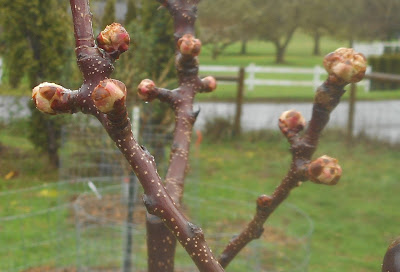 |
| Leyland Cyprus Tree, Anticipating Planting. 2.13.16 |
This is part of the approx. 1/4 acre that I have been clearing of Himalayan blackberry. The now - barren looking soil has been planted with grass and clover to retain soil and add nutrients. The clover also for bee forage. The grass and clover can be mowed repeatedly, to kill off residual bramble roots and crowns. I have already added a pine tree and an aspen that are not visible in this photo.
At the back of the photo are massive piles of the blackberry prunings. Behind them, and behind the trees - mostly Douglas hawthorn and some wild filberts - is the property line, then more of what is mostly Douglas hawthorn, a few maples, and some scattered blackberry brambles. In that location, there is more shade, and the blackberries do not grow as well. Just beyond those trees, the land slopes fairly steeply into a ravine and creek.
As discussed by Tao Orion (
Beyond the War on Invasive Species) - highly recommended book - I have not used Roundup / glyphosate or other herbicides to remove the blackberries. Which is good. Roundup would also kill the existing trees. They should be kept in place as long as possible for habitat and soil preservation, at least until other plants serve those roles.
Unfortunately, most of the hawthorns have reached their age span and many are falling over. I wanted a fast growing evergreen tree to out-compete existing and new Himalayan blackberry. Leyland cypress is controversial. They are fast growing, 3 to 4 feet per year. At a property boundary, their highly vigorous growth can result in landowner disputes. That will not be an issue here, because the bordering land is semi-wild, cannot be built upon or significantly altered, and my side of the boundary needs soil-holding trees. Leyland cypress is considered a sterile hybrid of Monterey cypress and Nootka cypress, so despite great vigor, is not capable of being invasive.
The Leyland cypress will effectively shade out the Himalayan blackberry, to the north of these trees. I'm anticipating many of the rest of the hawthorns to die and fall over, which is clearly evident with about half of the trees in this thicket. This area does not seem to support growth of seedling hawthorns, either due to shade by larger trees and blackberries, or possible deer eating them.











